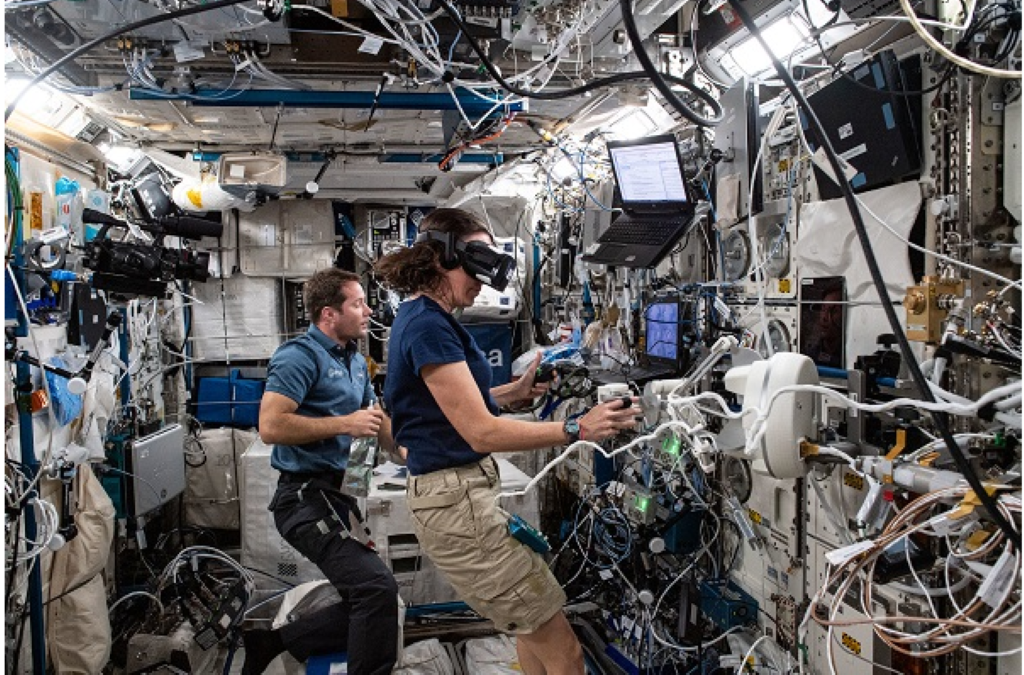In the world of technological innovation, the application of augmented reality comes as a novelty totally transforming the conception and execution of projectsin different areas. In fact, there are several applications that NASA has decided to develop in this area.

Considering the topic of immersive technologies in space missions, for some time now, astronauts on the International Space Station (ISS) have been making use of virtual and augmented reality. Every day on the space station, necessary operations are carried out to keep the station operational; maintenance is done with the use of robotic instrumentation and immersive technologies. Augmented reality and virtual reality, in this field, are mainly used in two areas: assisted maintenance and research regarding human behavior in microgravity conditions. More specifically, tablets and modified Hololens viewers are used for maintenance, thanks to which astronauts are supported step by step during operations. Among the countless developments in this field, we can mention: Sidekick which involves the use of a modified Hololens visor to perform hands-free maintenance operations. The visor is connected to an application, in this way, instructions projected in 3D overlay on the physical implants are followed. In addition, the application allows for video conferencing collaboration with operators on Earth. Next, T2 AR (https://www.youtube.com/watch?v=o77I18xl4H0 this video explains this project very well) was developed, which is an augmented reality application that supports astronauts during maintenance. T2 is one of the station’s treadmills; NASA used it to test how crew members can use AR to make repairs in space. Next, crew members tested a system that allows them to talk and gesture to initiate the operational app needed to assist with routine treadmill maintenance. AR, then, acts as an intelligent assistant that interprets what the camera sees and uses graphic signals to describe the steps to be performed. Finally, Cold Atom Lab is an augmented reality app developed to guide maintenance processes within this NASA-developed mini-quantum laboratory that allows for on-orbit studies of elementary particles. In addition to these applications, virtual reality and augmented reality allow simulations to be carried out that can monitor the physical and mental behavioral reactions of astronauts. In this regard, we can mention three of the most important applications: Immersive Exercise, an immersive augmented reality experience that accompanies the astronaut during daily exercise. Time Perception, another virtual reality application that monitors the change in perception that the astronaut accrues over time of his orbit experience through interaction with a series of predefined objects. GRIP an experiment conducted by ESA to measure how humans hold and manipulate an object under different gravity conditions. NASA recently launched an application (https://www.nasa.gov/apps/nasa-app/)to track the space station. The application, in addition to including an extensive collection of NASA content: images, videos, podcasts, news and articles; gives the ability, using augmented reality to follow the lab in its orbit toward Earth and get information about the station’s passage over one’s city. More specifically, it contains 3D augmented reality models of more than 30 NASA orbiters and missions. The viewer allows the user to view both the model in AR and in normal object mode for rotation and viewing. Click this link to see the astronauts’ immersive exercises https://www.esa.int/esatv/Videos/2020/12/Thomas_Pesquet_Alpha_mission_training/Immersive_exercise_for_Alpha_with_Thomas_Pesquet.
In conclusion, the prospects of the increasingly widespread use of augmented reality are increasingly promising. As technologies continue to develop, we can aspire to use this technology in various fields: from space exploration to education, from medicine to entertainment, the potential seems limitless.
Written by Sara Votta